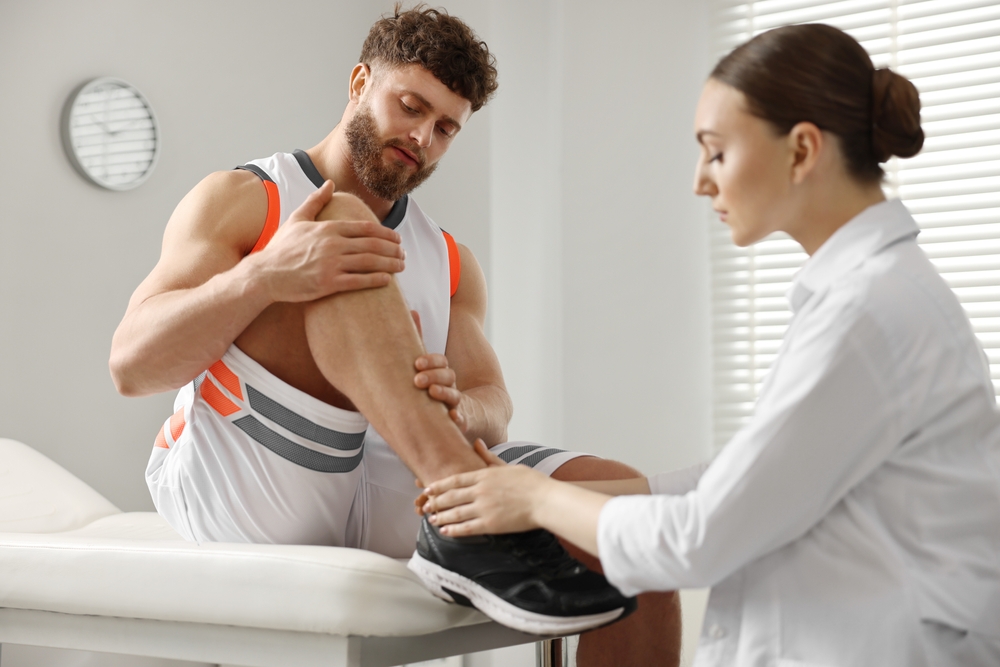Did you hear a sudden snap in your knee that caused pain, swelling, and instability in the knee? If yes, you might have torn your knee ligament. It occurs when knee tissue is overstretched or torn by sudden movement or injury. In most cases, it heals on its own, but in some cases, it can lead to serious complications if left untreated. Learn about knee ligament tear symptoms and when you need to seek medical help in this article. Visit the best Pain Management Clinic in Brooklyn at Doral Health & Wellness or log on to www.doralhw.org. to schedule an appointment with us.
What is a knee ligament tear?
When a knee joint is damaged or overstretched, its ligament (a strong band of tissue) may wear down, known as a knee ligament tear. It makes your ligament unstable. When you get hurt playing sports, you run the risk of damaging your ligaments. Knee movement is severely restricted by a torn ligament. As a result, the affected leg is unable to pivot, turn, or twist. If other medical treatments fail to heal a torn ligament, surgery may be necessary.
Knee ligaments are made up of four major components. The following knee ligaments join the femur (the thighbone) to the tibia (the shin bone):
- Ligament of the anterior cruciate (ACL): In the center of the knee is a ligament that controls the tibia’s rotation and forward movement (shin bone).
- The posterior cruciate ligament (PCL) is at the back: In the knee, it controls the tibia’s backward movement by way of a central ligament (shin bone).
- Medial Collateral (MCL): The inner knee stability is provided by the anterior cruciate ligament.
- Ligament of the lateral collateral (LCL): The outer knee stability is provided by the patellar ligaments.
Knee ligament injuries, such as those to the anterior cruciate ligament, are extremely painful and may limit your ability to do certain things. However, recovery is still possible in most cases. Treatment is now more effective than it used to be.
Connecting the bones of your body are the tough bands of tissue called ligaments. The ligament of the knee has four components.
As the name implies, the anterior cruciate ligament is one of the most injured parts of the knee. To reach the shin, it joins the femur and tibia.
Symptoms
- Pain, which may be sudden and severe, occurs when you hurt your knee. You may feel a popping sound or a snapping sensation.
- You may also notice that the joint feels loose, and you may not be able to put any weight on it at all.
- These wounds need to be treated by a doctor. Your knee may need surgery if your anterior cruciate ligament (ACL) has been torn, which can cause it to give way when you pivot or twist.
- An anterior cruciate ligament (ACL) injury is frequently accompanied by a loud “pop” or “popping” sensation in the knee. The inability to do the simplest of daily tasks because of the excruciating pain. It is also quickly developing swelling.
- A reduction in mobility. Due to weight bearing, there may be a feeling of “giving way” or unsteadiness.
Signs and symptoms of a meniscal tear
- Stiffness
- Pain and swelling in the knee.
- Twisting or rotating of the knee
- Difficulty straightening your knee fully
- A popping sensation.
- When you try to move your knee, you get the impression that it’s stuck or that it might give way.
When to seek medical attention
Medical attention is required for wounds that damage your knee. If your ACL is torn, surgery may be required to stabilize your knee and prevent it from giving way when you pivot or twist.
- A loud “pop” or a “popping” sensation in the knee is a common sign and symptom of an ACL injury. There are also extreme pain and an inability to carry out daily tasks.
- Swelling that occurs quickly.
- A decrease in mobility also happens, and the weight bearing can cause a “giving way” or a sense of unsteadiness.
What You Need to Know About Doral Health and Wellness Pain Relief Department
At Doral Health and Wellness, we see and feel the desperation of those who suffer from chronic pain every day. The organization believes that the patient and the doctor can work together to find long-term solutions to pain management by utilizing the best of modern technology and current treatments. If you’re ready to take the next step in managing your pain, we recommend consulting with our healthcare provider to explore the right treatments or therapies for you. Always listen to your body and adjust your daily routine to prioritize your well-being. Visit Doral Health & Wellness Pain Relief Department in Brooklyn, to get professional help and guidance on how to manage your problem. Call us on + 1-718-367-2555 to get a consultation. If you need help learning coping methods, register your information and make direct contact with our doctors at https://yuz88hfiyh7.typeform.com/Doralintake. Log on to www.doralhw.org. Or visit us at 1797 Pitkin Avenue, Brooklyn, NY 11212.






